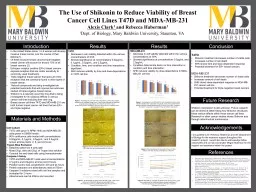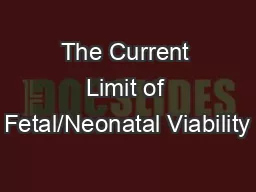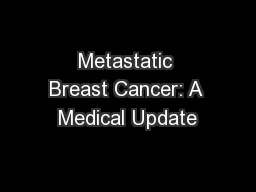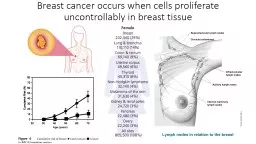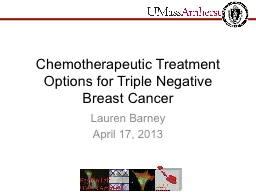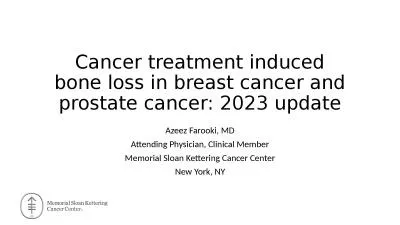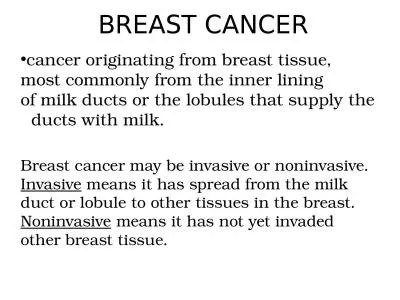PPT-The Use of Shikonin to Reduce Viability of Breast Cancer Cell Lines T47D and MDA-MB-231
Author : phoebe | Published Date : 2022-06-15
Alexis Clark 1 and Rebecca Haberman 1 1 Dept of Biology Mary Baldwin University Staunton VA Introduction In the United States alone 1 in 8 women will develop invasive
Presentation Embed Code
Download Presentation
Download Presentation The PPT/PDF document "The Use of Shikonin to Reduce Viabilit..." is the property of its rightful owner. Permission is granted to download and print the materials on this website for personal, non-commercial use only, and to display it on your personal computer provided you do not modify the materials and that you retain all copyright notices contained in the materials. By downloading content from our website, you accept the terms of this agreement.
The Use of Shikonin to Reduce Viability of Breast Cancer Cell Lines T47D and MDA-MB-231: Transcript
Download Rules Of Document
"The Use of Shikonin to Reduce Viability of Breast Cancer Cell Lines T47D and MDA-MB-231"The content belongs to its owner. You may download and print it for personal use, without modification, and keep all copyright notices. By downloading, you agree to these terms.
Related Documents

